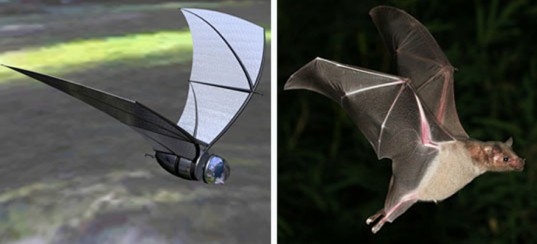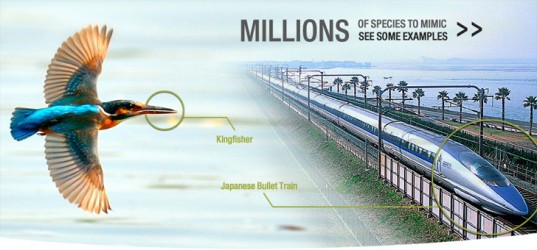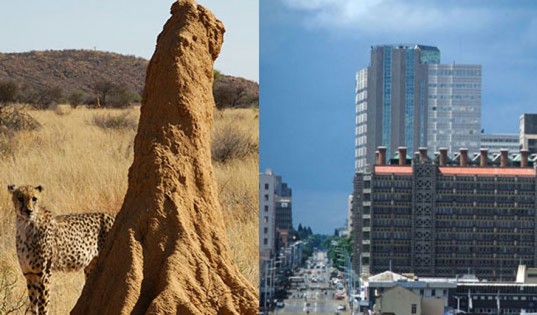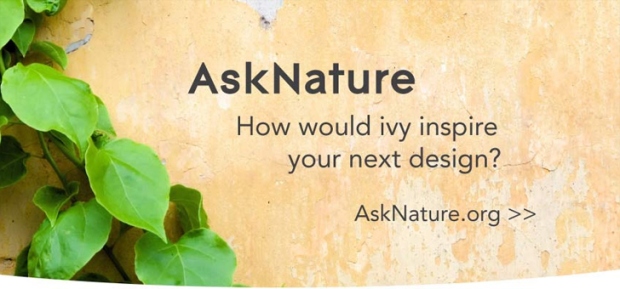How Biomimicry Can Help Designers and Architects Find Inspiration To Solve Problems
Shortly before his death in 2011, Steve Jobs said, “I think the biggest innovations of the 21st century will be at the intersection of biology and technology. A new era is beginning.” The crossroads that he spoke of actually has a name – biomimicry – and while it has been helping inventors, designers and architects innovate in genius ways for centuries, its value has become even more apparent in the past few years as we realize that Mother Nature is one of the universe’s most incredible designers. If you’re not yet familiar with biomimicry, it’s a word that describes finding design inspiration from nature to solve human problems. There are examples of biomimicry all around us – velcro, airplanes, solar panels modelled on ivy, and even buildings modelled after termite mounds. The people who came up with these inventions were obviously intelligent, but even more important, they were good observers able to make a connection between an issue they wanted to address and a solution that already existed in nature. If you’re an architect, designer or inventor facing a design dilemma that you simply can’t get past, or if you’re just feeling stuck in a rut, the answer may be right in front of you – if you know where to look.
This robotic spy plane that mimics the shape and function of a bat in flight is one example of biomimicry. One way to unlock the elucidation biomimicry can offer is by simply getting into nature and exploring, but not everyone has the time and resources to do that. If you’re a city dweller, it’s also very possible that you don’t have a wealth of animal or plant species in your vicinity. One powerful alternative to that that you can access right from your computer is AskNature, a free, online database of bio-inspired ideas, strategies and blueprints offered by Biomimicry 3.8, an organization dedicated to biomimicry education and professional consulting. Whether you’re a biologist who wants to share what you know about an amazing organism, or a designer, architect, engineer, or chemist looking for planet-friendly solutions, AskNature is an open-source platform and online community where biology and design cross-pollinate to create breakthroughs. You can sort AskNature by product, strategy or person to find what you’re looking for or if you’re just looking for general inspiration, you can just browse.
If you’re design geeks like we are, it’s pretty easy to get sucked into the many fascinating examples of nature-inspired design on AskNature but if you’re looking to take a more focused approach and really unraveling how biomimicry can bring your building, invention or way of thinking to the next level, Biomimicry 3.8 also offers an intro course (which we’re giving away for free here) and a more targeted 8-month Biomimicry Specialist course on the topic for professionals who are ready to bring biomimicry into their careers. The 3 one-week-long, in-person sessions immerse the student in the practices of biomimicry with a high teacher-to-student ratio and intense hands-on experiences. The student chooses from one of three locations: Mill Valley (San Francisco area), California; Essex (Boston area), Massachusetts; or in Barchem, The Netherlands and Willingen-Usseln, Germany. The program is designed to introduce and delve into the core fundamentals of biomimicry during the first and second in-person sessions, as well as during the first 16-week online semester. Participants then have the opportunity, through dedicated time and mentorship from instructors, to explore the application of these core fundamentals in their own discipline, field, or area of interest during the 10-week online “Biomimicry Virtual Design Lab,” which culminates at the last in-person session. If you’re wondering how the organization got to be such an expert on the topic of biomimicry, it might help to explain that one of its co-founders, Janine Benyus, literally wrote the book on it (Biomimicry: Innovation Inspired by Nature) back in 1997. Since then, the company has helped more than 250 clients and partners redesign everything from furniture to buildings to entire cities in nature’s sustainable image.
Termite mounds may not look too impressive but they actually helped architect Mick Pearce and the engineers at Arup Associates design the energy-efficient Eastgate Centre in Harare, Zimbabwe. Thanks to the building’s design principles, which are based on African termite mounds, it does not require conventional heating or air-conditioning.
The creation of Velcro was actually inspired by burrs when Swiss engineer, George de Mestral, found them on his dog’s fur. When he put it under a microscope, he noticed these hooks that could easily become attached to almost anything, including clothing, hair and even other burrs. “Animals, plants, and microbes are the consummate engineers. They have found what works, what is appropriate, and most important, what lasts here on Earth,” Benyus explains. “Failures are fossils, and what surrounds us is the secret to survival. If you’re looking to delve into biomimicry and learn more about it, Biomimicry 3.8 is a great place to start. In addition to offering a free AskNature database, they also host online courses for students, professionals and newcomers to the field. They’re currently conducting an Introduction to Biomimicry course for only $99 (or get it for free here in our giveaway) to help those interested begin their education and exploration into biomimicry. And if you’re looking for something a little more in-depth, the 8-month biomimicry specialist course is a fast track to mastering this eye-opening methodology.
Whether you’re a biologist who wants to share what you know about an amazing organism, or a designer, architect, engineer, or chemist looking for planet-friendly solutions, AskNature is an open-source platform and online community where biology and design cross-pollinate to create breakthroughs. You can sort AskNature by product, strategy or person to find what you’re looking for or if you’re just looking for general inspiration, you can just browse.
For more information : AskNature







Reblogged this on WildChild Studios.